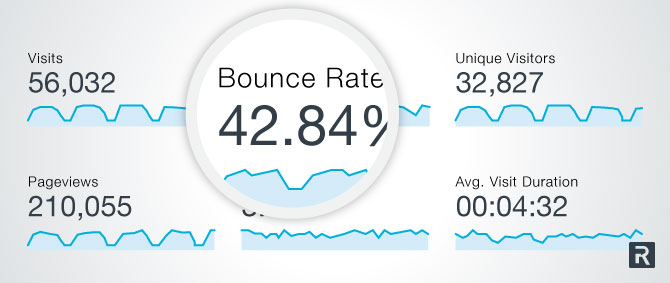How to Multiply Your Content Marketing Efforts Without Writing a Single Word
Content marketing is all the rage nowadays. In fact, 93% of B2B marketers are now using it to grow their business.
If you’re new to the world of content marketing, you might think that it is all about writing blog posts.
However, that is not necessarily the case.
In this article, we’re going to take a look at the different types of content marketing you can do, if you’re not into writing blog posts.
By the end of this article, you should have a good sense of how you can implement each method, so that you can use it to generate leads for your business.
But before we take a look at how you can implement these tactics, there’s something I want to discuss with you.
Before we go any further…
All of the tactics I’m about to mention can help you to develop your business.
However, none of them will work as well as they should, if you don’t know who your customer is.
Therefore, before you go any further, please take a moment to think about who you’re actually creating this content for.
The best way to do this is by creating a ‘Buyer Persona.’
I’ve spoken about this here and here.
As with all marketing efforts, if you don’t know who you’re trying to reach, you’ll end up wasting a lot of effort in the long run.
Follow these 6 forms of content marketing that don’t involve writing blog posts — and find out how to do them properly.
Now that we got that out of the way, let’s take a look at a popular form of content marketing that you can take advantage of.
1. Podcasts
Podcasts are gathering tremendous momentum as a content tool.
In 2014 alone, there were 2.4 billion Podcast download requests. On top of that 20% of Americans listen to a Podcast every month.

If you’re a fan of a popular blog or an online marketing personality, chances are that they’re already using Podcasts, or that they plan to in the near future.
You, yourself, might listen to Podcasts a lot in your spare time.
Podcasts can be a great inroad into the world of content marketing if you’re not into writing long blog posts.
However, you’ve probably never produced a Podcast before — so how exactly do you create one properly?
First, you need to understand that there are several formats that your Podcasts can take.
One format that you could adopt when creating a Podcast is the interview format. This involves reaching out to people who will connect with your audience and recording a conversation with them.
But what exactly do you talk about during the conversation?
When it comes to content marketing, the best forms often help people to learn something or assist them in achieving a certain result.
You need to keep this in mind when conducting your interview.
It is important to note that the value provided by the interview will be directly linked to the quality of the questions you ask 1and1 certificate.
As a result, you need to prepare ahead of time, so that you can knock it out of the park when recording your Podcast.
You can do that, by checking out some of the best podcasts in your niche.
Consider using the iTunes Podcast directory to find some relevant podcasts.

You’ll notice that in the best Podcast interviews, the questions asked tend to unearth tactics that will allow for the listener, to achieve the same results as the interviewee.
For instance, if you’re hosting a conversation with someone who is an expert in Facebook marketing, you might want to ask how they consistently achieve low CPC costs.
Or, ask them what their marketing funnel looks like.
You may even want to question what their business mindset is — something that a lot of entrepreneurs enjoy talking about.
Listen to some of the existing Podcasts available in your niche to get a sense as to what kinds of questions work best.
When it comes to finding people to interview, you may want to take a look at some of the other Podcasts in your niche to see who has been interviewed already.
You could then invite the same people to do an interview on your own Podcast.
Just because these people have been interviewed before does not mean that they do not want to be interviewed again.
Plus, if you ask questions that they have not been asked before, you’ll be able to create a great Podcast that still provides value, despite the fact that interviews with them already exist elsewhere.
Plus, since they have done interviews before, they’re automatically qualified as potential candidates for your Podcast, because you know they’re open to this type of engagement.
If you’re nervous about talking for an extended period of time, you need not be.
Your Podcast can be successful whether it is long or short — it is the content that matters most.
The ‘Entrepreneur on Fire’ Podcast and another one known as ‘The Top’ Podcast, are not that long (under 30 mins) — yet they’re still very popular.

Recording a Podcast does not need to be expensive, either. One of the main things you’ll need to invest in will be a good microphone and a way to ‘host’ your Podcast.
When it comes to hosting your Podcast, you can use a relatively inexpensive option known as Libsyn.
You can record your Podcast for free using Skype.
Once your Podcast begins to gain some momentum, you can then consider investing in better software and equipment, to improve quality.
If you’re interested in doing some editing, then check out some of the services available on Fiverr. Or, consider using Upwork.
If you have a good budget set aside for editing, you might even want to ask Podcast Motor outlook 2010 images do not download automatically.
We’re going to talk a bit more about video later, though it is important to note that you might even want to do a video call between you and the person you are interviewing.
You can then use that content as a Podcast and as a YouTube video — increasing the potential of essentially one piece of content.
Another Podcast format involves recording yourself talking about a topic.
This can be based on content that would have otherwise been a blog post. This is a great way to produce content if you’re not the writing type.
Consider talking through a topic that you have a lot of expertise on.
When it comes to getting people to listen to your Podcast, there are a couple of strategies that you can implement.
If you’re doing an interview with someone, you can ask for them to mail their list in the hopes that it will boost exposure.
Alternatively, if your Podcast involves you just speaking into the mic, you could reach out to people in the same way you would do with a blog post.
Simply find people who have shared content in the past that is similar to yours and ask if they’d be willing to check out what you have too.
Suggest that if they like it, they could share it.
Not everyone will be responsive to what you’re asking them to do, though you’d be surprised at how many people will be happy to share what you have, if it resonates with their interests.
2. YouTube videos
The other form of content that you can use as a part of your content marketing strategy are YouTube videos.
The fact that 59% of executives would rather watch a video than read a page of text also helps to make the decision of creating YouTube videos easier.
So what should your YouTube videos be about?
As I talked about earlier, one option is to conduct interviews.
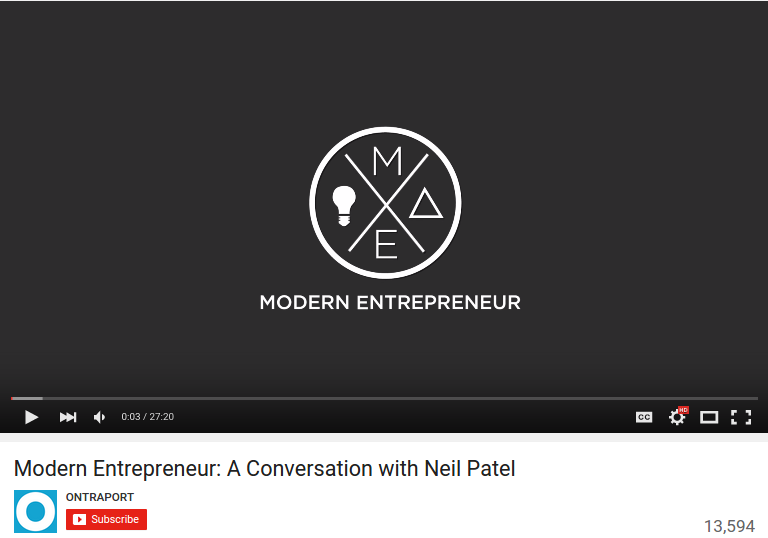
You could then repurpose your YouTube interviews as Podcasts, or vice versa — as mentioned earlier.
You can also record a video of you explaining how to achieve a particular result.
For instance, if you’re into Facebook marketing, you could record a video of yourself setting up a Facebook Ad campaign.
There’s even the option of turning this one topic into a weekly miniseries.
People are searching for these kinds of videos more and more, and it can be seen that ‘how to’ searches are up 70% in 2015.
Here’s an example from KISSmetrics.

If your end game is to sell a physical product, you could shoot videos that demonstrate the effectiveness of your product.
Ideally, you don’t want to do this in a sleazy way, as it is best to make your videos entertaining and indirect in their sales approach.
If you need inspiration, just take a look at the ‘Will it Blend?’ video series.
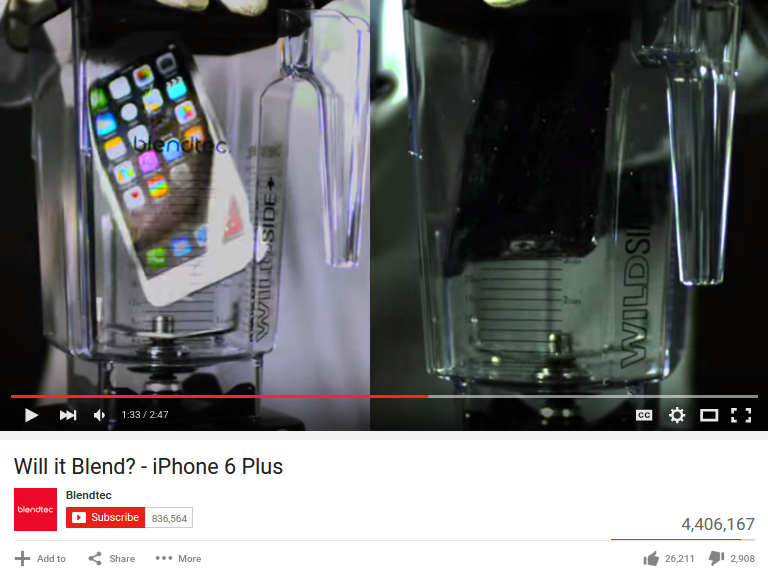
These videos, inadvertently, but very viscerally, show the effectiveness of the blenders in question.
They have tons of videos that showcase the quality of the blenders in a quirky way. It’s content marketing, just not as you’d expect it.
Here’s another example related to iPhone screen protectors.
These videos show the strength of an iPhone screen protector — without constantly going on about a bunch of features.

Now, of course, this all depends on the kind of product you have youtube videos auf iphone herunterladen.
But think about it — is there any way you can demonstrate the effectiveness of your product in an entertaining way?
If you can, there’s a chance that you have a winning YouTube content marketing strategy on your hands.
3. Webinars
It can feel as though everyone is hosting a webinar these days, and, chances are that you have been an attendee on a webinar in the past couple of months.
And, it makes sense if you look at the stats, because you’ll realize that 60% of marketers are using webinars as part of their strategy.
There’s a good reason behind all of this and it’s this — webinars work.
Webinars have a magic about them because they create the feeling of a live presentation, and they deliver information in a way that is easy to digest.
You don’t have to host a webinar live. Even recorded versions of a webinar have the power to impress.
In fact, there’s evidence to suggest that 84% of people don’t care if it is live or not.
In any case, if you want your webinars to blow people away, there’s a couple of things that you need to keep in mind.
At the very beginning of the process you need to think about what you’re going to talk about.
There’s a lot we could mention here, as webinars can be a science in and of themselves.
However, in general, it helps to teach people how they can achieve a specific result.
You can do that directly or indirectly.
If you were to do that directly, you might title your webinar — ‘How to Create Content Marketing That Sells.’
Here’s an example from KISSmetrics.

On the other hand, you can inadvertently teach people how to achieve a certain result by taking them through a case study.
You can do the case study on yourself or on people you have worked with.
73% of people say they now prefer case studies over webinars. It used to be that webinars were in the lead with 67%.
The two are not mutually exclusive, however, and, by combining the two formats, you may just have a powerful piece of content on your hands.
For a case study style webinar, you’d title it along the lines of ‘How I Used Content Marketing to Grow my Business to 7 Figures.’
Here’s an example from KISSmetrics.

It is important that over the course of the webinar, you provide a lot of value. If you don’t, people will be turned off and they will stop watching.
Remember, you’re dealing with a lot of distractions on the internet.
When hosting your webinar, make sure you are conducting it in an engaging manner.
48% of people say that a webinar is least enjoyable when the presenter is not engaging.
As you go through the webinar, you can talk about what was achieved and why what you’re talking about could actually be achieved.
As people listen to the story of the case study, they should be able to take away some nuggets of information that they can use in their own business.
Hopefully, if you get the right kinds of people on your webinar, the match between content and audience should keep people interested in what you have to say herunterladen.
As you’re creating the slides for your webinar, you should be consistently asking yourself if what you’re talking about is of value to the person on the other side of the screen.
The next step is figuring out how you can actually get people to watch your webinar. Luckily for you, there are a few proven strategies that you can put into place.
Possibly the simplest way, is to mail your own list (if you have one).
Assuming subscribers joined your list because they wanted to learn about topics similar to what you’re going to be talking about on the webinar, there shouldn’t be a problem.
Send out an email blast 7 days ahead of the scheduled webinar time and then send out an email the day before and then the hour before.
This pattern of emailing should help when it comes to building some anticipation for the webinar.
In the emails, mention what the webinar will be about.
You don’t have to be over the top, just use some bullet points to mention what will be discussed. However, don’t be bland in the way you describe things.
Be specific and give juicy details.
The text below was taken from the signup page of a KISSmetrics webinar. Bear in mind that the bullet point copy you use in your email can also be used on your signup page.

For someone who is interested in growing a company, which is what that specific webinar is about, those bullet points are pretty enticing.
The average attendance rate of a webinar is 40-50%, so use that as a target when running a campaign.
If you don’t have a mailing list, then you could consider the option of running some Facebook Ads.
Running ads can be one of the fastest ways to get people to engage with you and your content.
But, as you may know, you can’t just run ads carelessly — or else you will lose a lot of money.
Therefore, I advise you read some of my guides on running Facebook Ads before you begin.
You can find one guide here and another here.
One point to keep in mind when running a Facebook Ad is that you don’t want to advertise a webinar that is too far in the future.
Ideally, you want to keep the timeline from starting your ads to the actual webinar event within a week. If you don’t, people may lose interest and forget that they even signed up for a webinar.
If you don’t have the budget to run Facebook Ads, then you could also consider partnerships.
This is where your partner with someone who already has an audience similar to yours and work out some kind of deal.
For example, if you’re selling something at the end of the webinar, you could arrange a 50% split with the person who is providing the audience.
When it comes to finding partners, you could consider checking out some popular LinkedIn groups.
You might also want to look at some of the popular blogs in your niche. Find out who the owner is and drop them an email.
You can normally do that by checking out the about page or contact page on their blog. If you can’t find their email address, consider sending them a LinkedIn InMail.
When it comes to actually setting up the webinar, you want to keep things simple.
Have a landing page which provides people with the opportunity to sign up for the webinar and then host the webinar using GoToMeeting herunterladen.
Here’s an example of a landing page.

Ideally, you will want to use something like ClickFunnels to set up your landing page.
Within that platform, you’ll have the option of integrating the webinar registration link into a landing page, so that when people enter their email, they automatically become a potential attendee.
GoToMeeting provides an option where they will allow for you to record the webinar.You can take advantage of this feature and use the recording later as repurposed content.
Recording a webinar helps to provide content for those who couldn’t make it to the live event. 25% of people tend to watch a webinar replay.
You should mention your email address in the webinar so that people can still ask you questions.
As we’ve discussed before, you can create a YouTube video, an infographic and even a Podcast, if the webinar is not overly time sensitive.
4. Infographics
Infographics also represent a great opportunity, for those looking to get started in the world of content marketing without writing.
51% of B2B marketers are thought to have used infographics in 2014.
And in a similar vein, it can be seen that 39% of B2B buyers share infographics when using social media.
It also helps that of all the things people like to share on social media (including their opinions — 26%) pictures come out on top with 43%.
You’ve probably enjoyed an infographic or two in the past and so you’re likely aware of how powerful they can be.
If you want to get an infographic right, there are a few key ingredients that you need to stick to.
First, you need to find some great data that you can base your infographic on.
The easiest way you can do this, is by browsing some of the top blogs in your niche. You then need to take a look at some of their popular posts that contain data.
In some cases, what you will find is that a blog post or webpage has already collated the kind of data you’re looking to source.
Consider searching for this data by using the keyword ‘stats’ alongside your topic of interest.
Let’s imagine I was creating an infographic on Facebook marketing. In such a situation I’d search ‘Facebook marketing stats.’
Here’s what came up.

See how easy it can be to quickly find some relevant statistics?
From my own experience, infographics get the most shares when they have 6 main data points —

If you’re going to use some statistics from another site, make sure you note the URL of where you found the stats.
This will allow for you to credit that site in your infographic.
Like this.

You’ll also need to find a designer for your infographic.
It’s important that you don’t skimp here.
Poor design can hurt you in the long run silverlight download mac.
Use sites like Dribbble, Behance or even 99designs in order to find designers.
Generally, a good infographic designer will know how to create something that will get a lot of shares.
Even still, you might want to suggest the following rules to your designer, when laying out the specs —

When it comes to promotion, find all of the blogs that produce content based on your topic, then message them with the following email.

You may even want to take it a step further and find people who enjoy sharing infographics and then send them the same message.
One way that you can do that is by using the search feature on Twitter.
People with a massive audience might not want to retweet your content, but those with 10,000 followers or less will be more inclined to help you out.
If you want to do that, simply login to Twitter and enter a keyword based on your infographic —
![]()
Then, scroll down the feed and find some users who may be interested in your infographic.
When you find a profile that fits the bill, send them a direct message. You can do that by clicking on the small ‘cog’ icon on their profile and then choosing the ‘Send a Direct Message’ option.

Not everyone will respond, but those that do will contribute to your efforts of spreading the infographic.
You can also find people who enjoy sharing content by using BuzzSumo.
Simply do a search using a keyword that best represents your infographic and then select the ‘Content Type’ as ‘Infographics.’ The date option tends to work best when you choose 6 months plus.

Then click on the ‘View Sharers’ option. Keep in mind that you need to have a paid account in order to see the people who shared this content.
5. eBooks
You also have the option of creating eBooks.
Estimates suggest that Amazon is making as much as $530 million a year, just from the sale of eBooks.
You don’t have to charge for yours — but that figure does let us know that people enjoy a good eBook.
Now, it might be true that you don’t like writing blog posts, though that doesn’t mean you should shun eBooks too.
EBooks have the power to massively improve your marketing ability.
In terms of the content that will be inside of your eBook, you have a variety of options.
It is important to consider that this eBook may be a prospect’s first interaction with you and your content.
As a result, you’ll want to create an incredible first impression.
The best way you can do this is by creating an eBook that is based around a problem your prospects want to solve.
So, if we continue with the example of Facebook marketing that I used earlier, we might create an eBook that goes through ‘building an email list using Facebook Ads.’
When writing this ebook you need to make sure that you are as thorough as possible. You should leave no stone unturned.
Below is a 68 page example of an eBook from Unbounce. Notice how much effort they went through for something that they’re going to give away.

Don’t worry about giving away too much information at the moment. You’ll come to find that the more generous you are with information, the more it will pay off in the long run sims 4en windows 10.
If you’re struggling to come up with ideas for a good eBook, consider taking a look at some of the other eBooks that are in your niche.
Now, of course, you don’t want to plagiarize anyone. But, read through some of them and ask yourself what makes them so good or bad.
If you do not consider yourself to be a writer, that is fine.
All you need to do is hire someone that will write the eBook for you.
The easiest way to do this, is to go to the ProBlogger jobs board and list an ad that mentions you’re looking for a writer.
When you’re posting this ad, it is important that you are crystal clear with your specifications.
That means that you need to detail exactly what you want, when you want it by and how you want it done.
This is important, because it will reduce the chances of you hiring someone that will not be able to deliver the job to the specification you require.
Whether you write the eBook yourself or you have someone else write it for you — it isn’t going to promote itself.
As a result, you need to be proactive when it comes to getting people to read it.
As I mentioned earlier, you could consider the option of running Facebook Ads. This can be a fast way to get your eBook out into the marketplace.
You could advertise your eBook as something that can be obtained for free, in exchange for an email address.
This will help build a list of people who may be interested in any future promotions you may be rolling out.
You may also want to look into some free methods of distribution.
For instance, you might want to consider the option of converting your eBook into a Kindle book, and then listing it for free on the Kindle store.

When adopting a content marketing mindset, it is important that you remember your goal is not to make money from the eBook, but rather to distribute it and to get people engaging with your content.
Be sure to include a link to your website or to a landing page in the eBook, of which will allow for you to capture the reader’s email address.
This will let you to communicate with the reader when you want to.
You might even want to link to some of your other content marketing properties, such as your Podcast or YouTube channel.
You could also directly combine the eBook with your other content marketing strategies.
For instance, in an effort to keep people around, you could tell webinar attendees that at the end of the webinar, you’ll provide a link where they can download your eBook for free.
You could even experiment with giving people the eBook as soon as they sign up for the webinar.
The quality of the eBook may build anticipation for the webinar.
On top of that, you could also mention, at the beginning and end of a Podcast, that you have an eBook on offer.
Or, you could provide a link in the description of a YouTube video that lets people know you have an eBook available.
For Podcasts and YouTube videos especially, this can be a great way to capture leads that might have otherwise been lost.
There’s also the option of approaching popular Facebook and LinkedIn groups.
One way you can do this is by looking at the directory of LinkedIn groups, and researching if there are any that align with your goals.

Or you could simply do a search wizz air appen.
If you want to search Facebook, enter in a keyword that is based on your topic of interest.
![]()
Then, click on the ‘More’ option.
![]()
And, select the ‘Groups’ option.
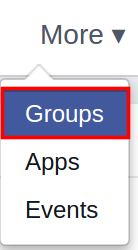
You could even consider approaching popular ‘Fan Pages’ that are in need of a giveaway and suggesting the use of your eBook.
If you want to do that, just select the ‘Pages’ option instead of clicking on the ‘More’ dropdown menu.
You may even want to approach some bloggers in your niche, to see if they’d be willing to share your eBook.
Bloggers are always in need of great content.
If possible, you might want to use an excerpt from your eBook and repackage it as a blog post. You could then use that piece of content as a guest post.
At the bottom of the guest post you could include a link to the full eBook.
6. Instagram
With over 400 million members, roughly 1 in 5 people who use the internet use Instagram.
And so, Instagram represents a great opportunity for those who want to develop a content marketing plan.
Before you get started with Instagram marketing, it is important that you have an understanding of how people are interacting with the platform.
Most important: You can’t be overly salesy when it comes to marketing on Instagram.
If you do that, you’re chances of creating any kind of engagement on the platform will likely be low.
Being an image-centric platform, it makes sense that you might want to use Instagram to showcase pictures of your product.
Let’s take a look at how you can correctly use images of your product on Instagram as a means of content marketing.
Here’s an example from fashion brand Burberry.
It showcases a product of theirs.

Here’s another example from Virgin Hotels.

They showcase their offering by highlighting some of the innovative features that can be found in their hotel rooms.
Both examples are not over the top.
Virgin has shown you a cool feature of their hotel rooms without demanding that you ‘go and book your room right now!’
And Burberry let the quality of the item do all of the talking.
Here’s another example from Taco Bell —

Essentially, this post is designed to let you know that you can ask for cheese as an extra with your order.
Notice that, as with all the other content types we have covered, they’re not excessive with the way they’re directing you to take action.
Alternatively, you can do content marketing on Instagram without showing any pictures of your product at all.
That’s because you can instead use your Instagram campaign to represent what you or your company believes in and represents rundfunkbeitrag herunterladen.
Here’s an example from Hewlett Packard.
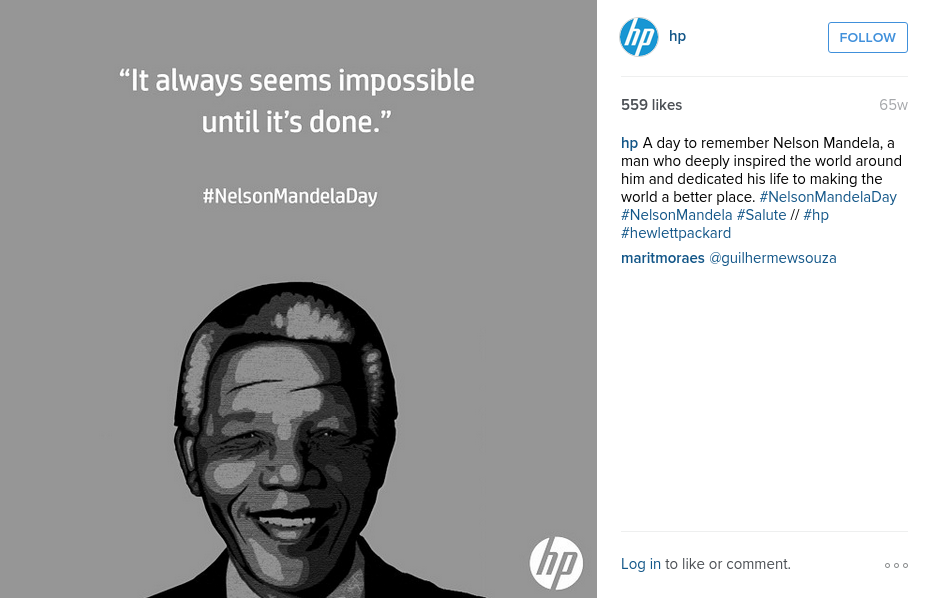
Here’s another example from Nike —

Here’s an example of an image that I have used on the platform.

When it comes to creating your images, you can use a platform known as Canva. I’ve mentioned here how you can use Canva to create images for social media.
Though they play a big role, images are not the be-all and end-all of Instagram marketing.
Another aspect you need to focus on is the ‘Bio’ and ‘Website’ section.
This is where you can tell people what you do and where they can go to find out more.
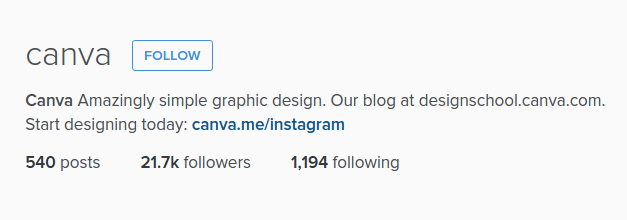
Below is an image of the page where you can edit your profile on Instagram. If you want to sign up, you will need to download the Instagram app first.

The ‘Bio’ section is the chunk of text you see at the top of an Instagram profile. You can’t put any ‘clickable’ links here.
But, you can use this section to notify people about some of the other offerings you may have.
For instance, if you have a Podcast or an eBook on offer, you can mention it here.
The ‘Website’ section is where you can provide a ‘clickable’ link that will take people to where you want them to go.
What you write here tends to depend on what your Bio says. You’re not stuck with anything that you do write and you can later change it.
Now, let’s talk about the captions of your images. This is the bit of text that you tend to see to the right of an Instagram post.
The section highlighted below is an example of a caption.

As with all social media posts, you want to keep your caption brief.
Unless you’re directly addressing a certain issue, which is rare, keep your posts under 25 words.
You’ll find that most Instagram captions either explain the image by adding a little bit of context, or they ask the person viewing the image a question.
Questions related to the image can be a great way to boost engagement on Instagram, as shown in the post below —
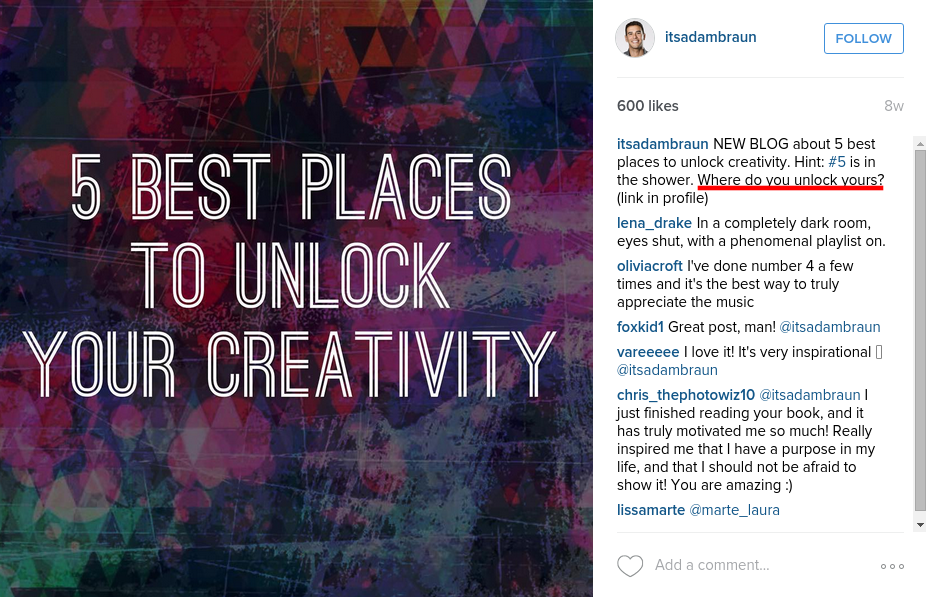
In the caption section, you also have the option of including some ‘hashtags.’
If you’re familiar with Twitter and even perhaps Facebook, you’ll already recognize the function of hashtags.
Hashtags can allow for people to find your posts when they are searching the Instagram platform.
When using hashtags, it is important that you do not go overboard. Yes, there is a limit of 30, but you really don’t need this many.
Here are some posts from the Starbucks Instagram profile.
They use hashtags really well, and, over the course of these images, you should get a sense of how you need to be using them too.
When you look at the image below, you’ll notice that Starbucks uses the hashtags to describe exactly what is in the image. They then give the picture some context, using the phrase — ‘#EasyLikeSundayMorning.’

On the next image, you can see that they do more of the same.
Interestingly, they also mention in the Bio that there is a link to purchase the product shown in the image.

And, lastly, if we look at this image, we see the same pattern again servus tv mediathek videos downloaden. They’ve described exactly what is in the image, and they’ve given it some context in the form of ‘#LazyAfternoon’ and ‘#Fall’
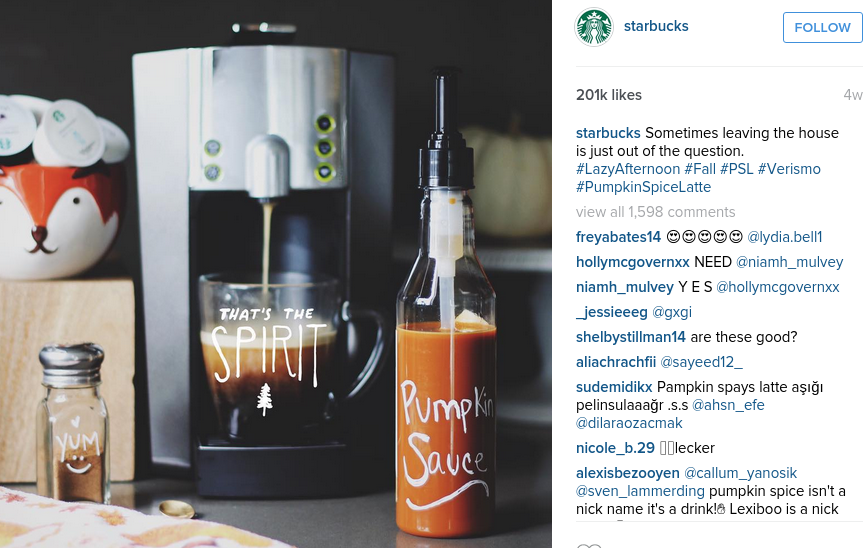
Consider creating an account and following some of the top companies and personalities on Instagram.
You’ll then inadvertently learn how Instagram marketing works and what separates the effective profiles from the ‘not-so-effective’ profiles.
Conclusion
If you thought content marketing was all about writing blog posts — you’re mistaken.
You can jump into the world of content marketing without ever having to write a blog post.
Whether you want to vocalize your content by using a Podcast or you want to present your content using a webinar — there are many options open to you.
Whatever option you choose, however, the key is that you provide value.
Now, of course, the way in which you provide value is going to depend on the platform in question.
What counts as valuable content on Instagram is going to be different from what counts as valuable content for a webinar.
Study what is in this post and some of the examples out there in the markets to get a sense of what each option demands of you.
You don’t have to do all of them. Pick the option that suits your personality and then run with it.
Get some results and you can then progress to some of the other options out there.
Eventually, you’ll have an entire ecosystem of content marketing outlets that will allow for you to engage with prospects in a variety of ways.
What have you found to be the best form of content marketing that doesn’t require writing a blog post?

